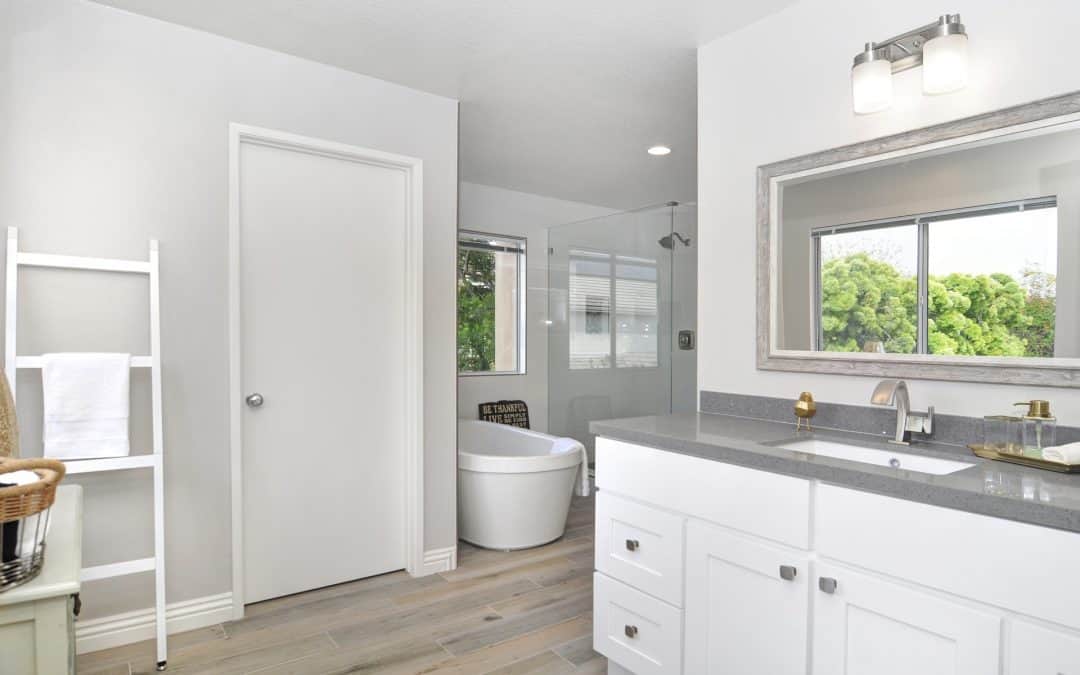Are you thinking about renovating your home but aren’t sure how to do it? Whether you want to update a bathroom, refurbish a floor or finish out a spare room, it is important to think about the steps required to plan, execute and complete the project. Equally important is to be clear about what benefits the project will bring. Do you plan to stay in your house for several more years, or are you renovating to sell? Here, we tap into the experience of real estate agents, designers, architects and contractors to show how to avoid making costly mistakes and successfully guide a project to completion.
Set Objectives for the Renovation
The first priority in starting a renovation is defining the project’s scope. Do you want to expand the living area for a growing family? Is your kitchen inefficient? If there are multiple projects, prioritize them and undertake work on one space at a time. If you plan to live in your home while the work is going on, limiting work to a single area greatly reduces stress.
If the remodel is for your own benefit, think about how you might use the space over time. If you want to upgrade your kitchen, take a good look at how you use it. Where should the sink, fridge and stove be placed? Do you need more countertop or pantry space? How is the lighting? Do your children use the kitchen for projects and homework? As you plan, be sure you know what will work for your unique needs.
Know Your Area’s Resale Values
If you want to increase your home’s resale value, make sure the project actually adds value to the property. Research resale values for your neighborhood, and avoid projects that put your property out of range. For example, building and maintaining a swimming pool is expensive, and not all buyers appreciate a pool. Adding a pool can actually make it more difficult to sell the property. However, in some neighborhoods, pools are expected.
Remodeling Magazine’s “Cost Versus Value Report” for 2019 lists 22 popular upgrades, their average cost and average resale value. Few recoup the amount invested. That said, be sure to evaluate the impact of the remodel on your property. Old, worn siding makes a poor first impression on a prospective buyer. Although siding replacement only returns about 75% of the cost, new siding improves curb appeal and can be a great selling point.
Remodeling a kitchen often has good resale value. Energy-efficient appliances, new cabinet doors, fresh paint and upgraded flooring give a fresh look to a kitchen for a moderate price. Experts recommend avoiding trendy upgrades that will look dated in a few years. Instead, go with classic colors and fixtures. However, using cheap materials can lower your home’s value.
Be Realistic About Doing It Yourself
Although you may be qualified to complete a project by yourself, it pays to evaluate the cost benefits of spending the time it takes to complete the work versus hiring a professional. Mistakes cost money. Some jobs, such as laying a hardwood floor, are expensive to execute, require several steps to complete and can be costly to remedy if not done correctly.
Start by getting your ideas from conception to realistic designs. Planning the details with a design professional or contractor who knows what works and what doesn’t will save you time, hassle and money. Even if you decide to complete some tasks yourself, you will probably need professionals for some aspects of the work, such as electrical modifications, plumbing upgrades, masonry or structural changes. Professionals can also advise you about what permits may be needed, compatibility of additions with the existing architectural style, price of materials and complexity of installation.
Budget Accurately
Once you know what your design standards are, you should create a budget. Creating a realistic budget helps you choose affordable materials that create the look you want without breaking the bank. It also helps you write a scope of work for contractor’s bids.
Under-budgeting can sabotage a project. The rule of thumb is to add 10 to 20% for unexpected issues. If you tear out a wall, you may find electrical wiring or plumbing that has to be dealt with. Older homes often used asbestos in siding and roofing. Asbestos must be handled and disposed of according to strict regulations. Costs of materials may go up during the work, or you may need a structural engineer’s advice about a load-bearing wall.
Once you have a budget, stick to it. It’s easy to go overboard as you get into a project and see the range of materials, furnishings and design options. If you find something expensive that you just can’t live without for your remodel, see what you can adjust in your budget to smooth out the overage.
Low Bid Is Not Always Cost-Efficient

When you select a contractor, get at least three bids. Make sure your specifications and scope of work are detailed and clear. Compare bids to make sure that each contractor is including the same quality and quantities of materials. If the contractor relies on subcontractors for part of the work, review costs for that as well. Review material costs, markups, labor costs and profits.
If you use the internet to start your search, don’t stop there. Ask prospective contractors for references, and call them. Ask previous clients about timeliness, adherence to budget and quality of work. Many professionals keep a portfolio. Review this carefully to determine if the style and quality of work is what you are looking for. Make sure they are licensed, insured and bonded for the work proposed. Verify that they have an office in your area.
Keep in mind that the contractor with the lowest bid may not always turn out to be the cheapest in the long run. If you’re installing a new floor, make sure they have included subfloor materials, have a plan to disposal of old materials and are clear about how they will transition the level of the new flooring with that of existing, adjacent flooring. Ask about guarantees and warranties on work and materials after the work is completed. If the contractor won’t guarantee the quality of work for a stated period of time, it may be more cost-effective to go with someone who will. Replacing inferior work costs more than a higher bid to do it properly the first time.

Put the contract in writing, and include a payment schedule, insurance requirements, timeline, how to communicate and how to handle contingencies. At the end of the work, conduct a walk-through with the contractor. Specifically identify where quality doesn’t meet the standards set out in the contract and how to remedy it. Withhold final payment until corrections are made. Also ask for certificates that verify permit requirements are fulfilled.
Final Thoughts
A successful remodel should create a functional, aesthetically pleasing living space that will last for years. Avoiding costly mistakes, knowing the market value of your neighborhood and selecting a qualified contractor all contribute to success. We’d like to know how your remodel goes. Please get in touch to share your experiences, tips and thoughts about your project.

Recent Comments